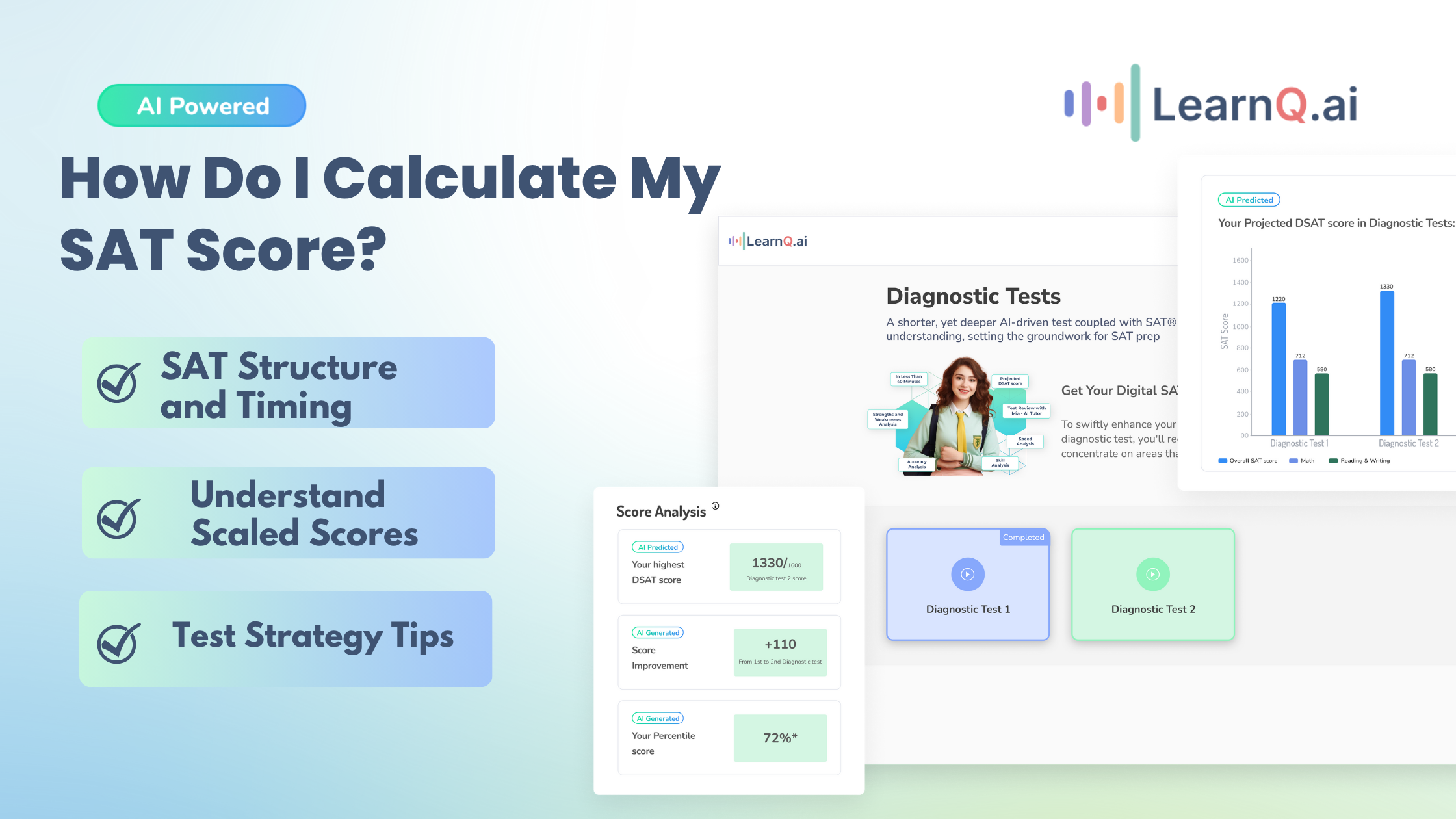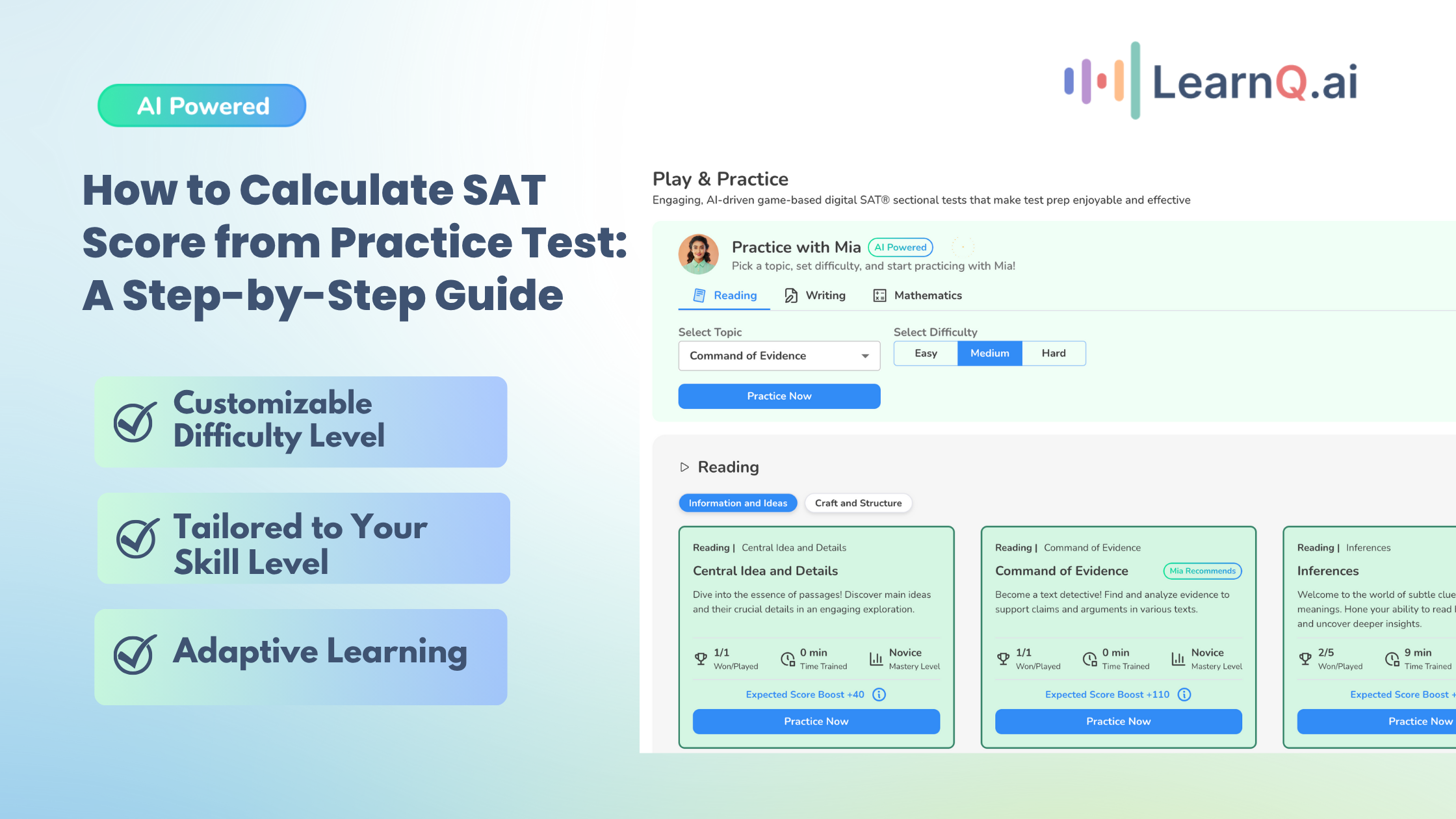SAT Structure and Timing
The current SAT uses a multistage adaptive design across two main sections:
- Reading and Writing Section: 54 questions total, split into two 27-question modules, 32 minutes per module.
- Math Section: 44 questions total, split into two 22-question modules, 35 minutes per module.
- Total Test Time: 2 hours and 14 minutes, including a 10-minute break between sections.
This adaptive design means your performance on Module 1 influences the difficulty level of Module 2. Harder questions in the second module can boost your section score if you answer them correctly, while easier questions cap how high you can score on that module.
Step 1: Calculate Your Raw Score
Your raw score is simply the total number of questions you answered correctly across each section. There is no penalty for wrong answers, so it’s always better to guess than to leave a question blank.
Raw Score Formula:
- Raw Score=Number of questions answered correctly \text{Raw Score} = \text{Number of questions answered correctly}
- Example: If you answered 40 questions correctly out of 54 in Reading and Writing, your raw score for that section is 40.
Step 2: Understand Scaled Scores
Raw scores don’t translate directly to your final section scores. Instead, the College Board uses a conversion table—unique to each administration—to adjust for slight differences in test difficulty.
- Scaled Scores Range: 200–800 per section
- Composite Score Range: 400–1600 total
Conversion tables factor in question difficulty levels and performance patterns. That means two students with the same raw score could end up with different scaled scores if they got different sets of questions correct.
Pro tip: Review the conversion table from any official digital SAT practice test in the College Board’s Bluebook app or on College Board to see how raw scores map to scaled scores for that test date.
Step 3: Convert Raw to Scaled
- Locate your raw score on the left column of the conversion table.
- Read across to find the corresponding scaled score (200–800).
For example, on one digital SAT practice test:
Raw Score Scaled Score 40 610 42 640 44 660 (Actual tables vary by test date; use the one provided with your sat practice test.)
Step 4: Combine Section Scores
Once you have your scaled scores for:
- Reading and Writing Section Score (200–800)
- Math Section Score (200–800)
simply add them:
Composite SAT Score = Reading & Writing Section Score + Math Section Score
A perfect score is 800 + 800 = 1600.
Digital SAT Specifics
- The SAT’s adaptive design tailors Module 2 difficulty to your Module 1 performance.
- Harder questions are weighted more heavily, so correct answers on tougher questions can boost your section score disproportionately.
- Two pretest questions per module don’t count toward your score but help the College Board calibrate future exams.
- Although the digital SAT’s scoring algorithm is proprietary, past concordance studies ensure digital and paper SAT scores remain comparable.
Test Strategy Tips
- Answer every question—there’s no penalty for guessing.
- Preview the second module: in Module 1, pace yourself to reach and answer as many questions as possible.
- Use the process of elimination: even a 50/50 guess gives you a 50% chance of a point.
- Practice with official digital sat practice test materials on the College Board’s Bluebook app.
- Analyze your subscores (e.g., algebra, data analysis, information and ideas) to target your study plan.
Frequently Asked Questions
Q: What’s the difference between raw and scaled scores?
A: Raw scores count correct answers. Scaled scores adjust those raw scores to a 200–800 scale so that all test forms remain fair.
Q: Can two students with the same raw score have different scaled scores?
A: Yes—because the College Board’s algorithm weighs questions by their difficulty levels and uses Item Response Theory to fine-tune scores.
Q: How quickly are digital SAT scores released?
A: Scores typically arrive 2–3 weeks after your test date.
Conclusion
Now that you know how to calculate your SAT score, you can track your progress more effectively, set clear score targets, and refine your test strategy. Use official digital SAT practice tests to gather raw scores, consult the conversion tables to get scaled scores, and combine your section scores for a total out of 1600. With diligent practice and a solid understanding of the scoring process, you’ll be well on your way to reaching your ideal











